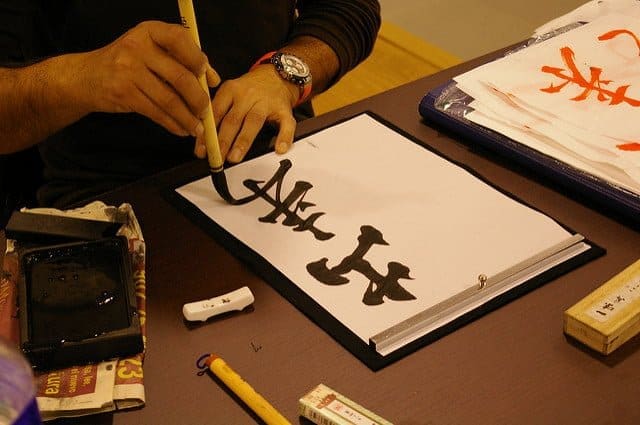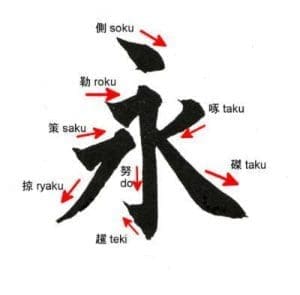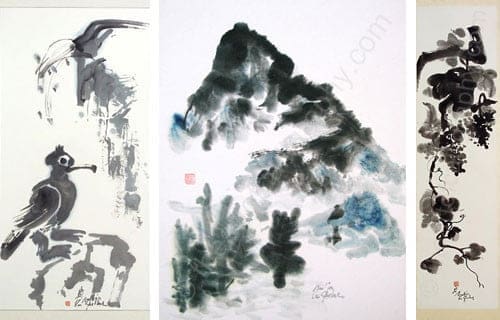Japan Easy Drawings Japan Lettering in Japanese
A bit of history about Shodo
In Japan, Chinese characters have a long and illustrious history. Around the fifth century A.D., or around 1,500 years ago, Chinese letters or kanji were brought to Japan from Korea or China.
Since then, the Japanese have practiced Chinese character calligraphy, or shodo ("the way of writing"), drawing on Chinese heritage and producing famous calligraphers of their own.
Read more about Shodo history.
Shodo Education | Japanese calligraphy
Shodo is a compulsory topic in Japanese elementary schools, as well as an elective in junior and senior high school. However, at this level, Shuji (literally, "lettering practice") is used to teach the fundamentals of using the brush and constructing the letters, as well as the characters themselves.
Shodo, on the other hand, strives to be an art form and is reserved for individuals who have mastered the fundamentals of Shuji.
Calligraphy is a common hobby among adults in Japan, and most children study it in elementary school. The significance put on the sequence in which the strokes of letters are drawn is an intriguing element of Japanese writing that continues over to calligraphy.
There are three primary writing styles. Beginners generally learn the block (Kaisho) style first since it is the most basic and easiest to write. Following the mastery of this technique, practitioners generally go to the semi-cursive (Gyosho) style before moving on to the cursive (Sosho). It usually requires a lot of practice to master the Sosho style.

Block style (kaisho) – semi-cursive writing style (gyosho) – cursive writing style (sosho)
There are a few temples and culture institutes where travelers may take English-language calligraphy courses for beginners. Although they are available across the country, they are more readily available in tourist destinations and historic areas, such as Kyoto and Tokyo.
Such activities may be found at local tourist information offices and on vacation activity websites like Voyagin.
A typical Japanese calligraphy experience includes learning about the history of the trade before being taught through various methods. The participants are then given the opportunity to practice writing specific sets of kanji while under the supervision of the teacher. At the end of the session, participants are typically allowed to pack some of their work in a safe manner to take home with them.
Shodo lessons are usually between 2000 and 5000 yen per person and last 1-2 hours. Reservations are frequently necessary.

Tools and implements used for Shodo – Japanese calligraphy
A calligraphy set includes the following items:
- Shitajiki is a Japanese word that means "soft mat." It provides a soft, pleasant writing surface.
- Bunchin: A metal stick used to keep the paper weighted down while writing.
- Hanshi: Special calligraphy paper that is very thin.
- Brush: Fude. A bigger brush is used to write the major characters, while a smaller brush is used to write the artist's name. The tiny brush, on the other hand, may be used to draw the characters.
- Suzuri: A large black ink jar.
- Sumi: A solid black substance that must be rubbed in water in the Suzuri to make black ink, which is then used to write. Instead, "instant ink" in bottles is also available.
Basic Strokes of Eiji-happo
Although Japanese characters are made up of a variety of strokes, a beginner should start with the eight most fundamental strokes. It's the character for "eternal," or Ei, which is made up of eight strokes.
The "'eternal' character eight directions," or Eijihappo, is named after these eight strokes, which go in eight distinct directions.

As the above image illustrates, the eight "directions" (or strokes) form the character for "eternal."
| Chinese | English | Japanese | |
|---|---|---|---|
| 側 | soku | dot | ten |
| 勒 | roku | horizontal stroke | yokoga |
| 努 | do | vertical stroke | tatega |
| 趯 | teki | upflick from a horizontal or vertical stroke | hane |
| 策 | saku | rightward upflick | migihane |
| 掠 | ryaku | leftward downstroke | hidaribarai |
| 啄 | taku | leftward downflick | hidarihane |
| 磔 | taku | rightward downstroke | migibarai |
Nearly all Japanese characters use a combination of at least some of these strokes.
Drawings in ink

Shodo pieces of art are frequently placed in the alcove (床の間, tokonoma) of Japanese tatami rooms. The Japanese tea ceremony includes the use of hanging scrolls (掛け軸, kakejiku) showing Japanese calligraphy.
Ink and fude brushes are also used in 墨絵, sumi-e (ink-wash painting). Sumi-e attempts to capture the spirit or essence of an object. The goal, as with shod, is not to replicate the real appearance of the item being portrayed.
Above all, it is important to focus on the overall picture rather than the specifics. Sometimes ink-wash paintings are mixed with written calligraphy.
Japanese calligraphy is a millennia-old art form that continues to exist now and reflects Japanese culture and aesthetics. It is a popular cultural activity that you will have the opportunity to enjoy in Japan because it is one of the most popular and important traditional art forms.
Until next post.
Sayōnara (さようなら)
Source: https://www.sugoijapan.net/japanese-culture/shodo-the-art-of-japanese-calligraphy/
0 Response to "Japan Easy Drawings Japan Lettering in Japanese"
Post a Comment